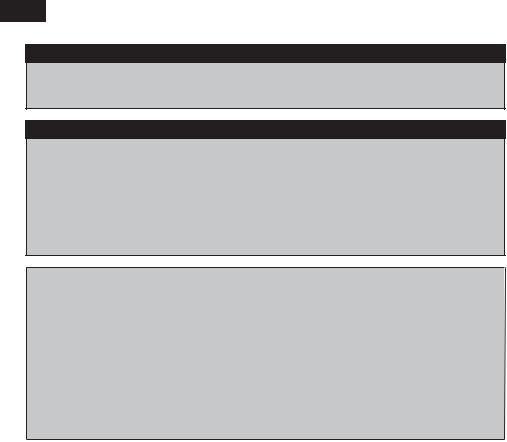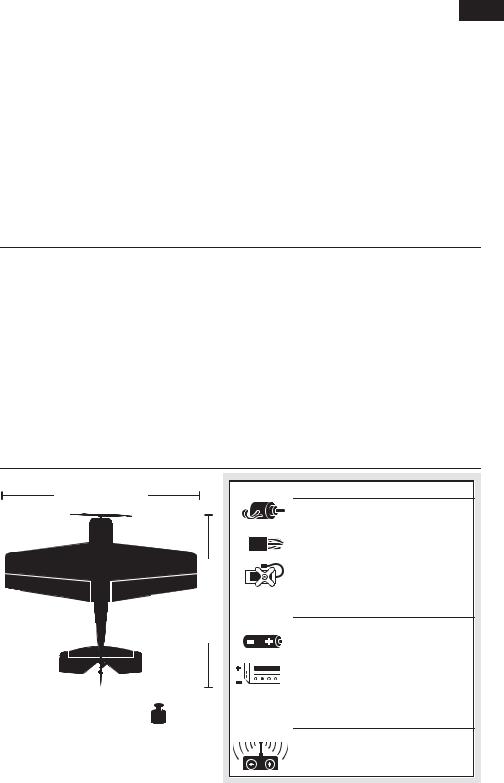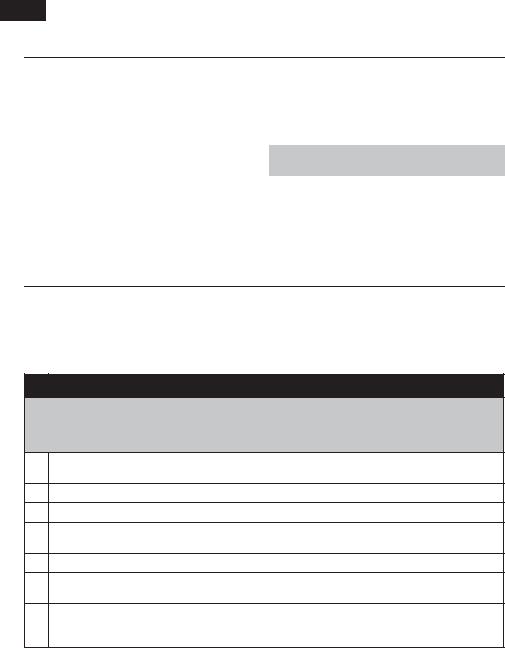E-flite UMX Yak 54 180 BNF User Manual

UMX™ Yak 54 180
Instruction Manual Bedienungsanleitung Manuel d’utilisation Manuale di Istruzioni

EN
NOTICE
All instructions, warranties and other collateral documents are subject to change at the sole discretion of Horizon Hobby, Inc. For up-to-date product literature, visit www.horizonhobby.com and click on the support tab for this product.
Meaning of Special Language:
The following terms are used throughout the product literature to indicate various levels of potential harm when operating this product:
NOTICE: Procedures, which if not properly followed, create a possibility of physical property damage AND little or no possibility of injury.
CAUTION: Procedures, which if not properly followed, create the probability of physical property damage AND a possibility of serious injury.
WARNING: Procedures, which if not properly followed, create the probability of property damage, collateral damage, and serious injury OR create a high probability of superfi cial injury.
 WARNING: Read the ENTIRE instruction manual to become familiar with the features of the product before operating. Failure to operate the product correctly can result in damage to the product, personal property and cause serious injury.
WARNING: Read the ENTIRE instruction manual to become familiar with the features of the product before operating. Failure to operate the product correctly can result in damage to the product, personal property and cause serious injury.
This is a sophisticated hobby product. It must be operated with caution and common sense and requires some basic mechanical ability. Failure to operate this product in a safe and responsible manner could result in injury or damage to the product or other property. This product is not intended for use by children without direct adult supervision. Do not use with incompatible components or alter this product in any way outside of the instructions provided by Horizon Hobby, Inc. This manual contains instructions for safety, operation and maintenance. It is essential to read and follow all the instructions and warnings in the manual, prior to assembly, setup or use, in order to operate correctly and avoid damage or serious injury.
Age Recommendation: Not for children under 14 years. This is not a toy.
Safety Precautions and Warnings
•Always keep a safe distance in all directions around your model to avoid collisions or injury. This model is controlled by a radio signal subject to interference from many sources outside your control. Interference can cause momentary loss of control.
•Always operate your model in open spaces away from full-size vehicles, traffi c and people.
•Always carefully follow the directions and warnings for this and any optional support equipment (chargers, rechargeable battery packs, etc.).
•Always keep all chemicals, small parts and anything electrical out of the reach of children.
•Always avoid water exposure to all equipment not specifi cally designed and protected for this purpose. Moisture causes damage to electronics.
•Never place any portion of the model in your mouth as it could cause serious injury or even death.
•Never operate your model with low transmitter batteries.
•Always keep aircraft in sight and under control.
•Always use fully charged batteries.
•Always keep the transmitter powered on while aircraft is powered.
•Always remove batteries before disassembly.
•Always keep moving parts clean.
•Always keep parts dry.
•Always let parts cool after use before touching.
•Always remove batteries after use.
•Always ensure failsafe is properly set before fl ying.
•Never operate aircraft with damaged wiring.
•Never touch moving parts.
2

EN
Thank you for purchasing the E-fl ite® UMX™ Yak 54 180 ultra micro airplane with which you’ll enjoy a bold new level of aerobatic performance. No other aerobatic design meets the challenge and demands of
precision and 3D versatility like the Yak 54 can. Recognized early on by the father of 3D, Quique Somenzini, his Yak 54 concept ushered in a new era of RC aerobatic agility that’s now possible to experience in small fl ying spaces indoors and out. Your UMX Yak 54 180 offers incredible speed and thrust from its specially tuned brushless power system. But what truly makes this go-anywhere 3D thoroughbred truly special is its incredible AS3X® System that delivers incredible precision so that you can perform aerobatics smoothly and the control authority to pop sharply into 3D maneuvers with the stability of a giant-scale aerobat. And despite its size, AS3X stability also helps you fl y in moderate winds without seeing so much as a bobble, plus you’ll be able to hold high-alpha fl ight angles that have a locked-in feel.
The exceptional capabilities of the E-fl ite UMX Yak 54 180 may require a little more fi rst-fl ight preparation than other Bind-N-Fly® ultra micro aircraft you may have experienced. A thorough read of this manual will help assure that you’re equipped to successfully enjoy all the benefi ts this outstanding ultra micro model has to offer.
Table of Contents
Prefl ight Checklist.................................................. |
4 |
Control Horn Settings............................................. |
9 |
AS3X Stabilization Delivers |
|
Dual Rates and Expos ............................................ |
9 |
Breakthrough Performance .................................... |
4 |
DX4e and DX5e Expo Activation and Deactivation 10 |
|
Charging Warnings................................................. |
4 |
Post Flight Checklist ............................................ |
10 |
Battery Charging.................................................... |
5 |
Flying Tips and Repairs ........................................ |
11 |
Low Voltage Cutoff (LVC) ........................................ |
6 |
Power Components Service ................................. |
12 |
Transmitter and Receiver Binding........................... |
6 |
Troubleshooting Guide ......................................... |
13 |
ESC/Receiver Arming, Battery Installation |
|
Limited Warranty ................................................. |
14 |
and Center of Gravity ............................................. |
7 |
Warranty and Service Information ........................ |
16 |
Side Force Generators (SFGs) Installation............... |
8 |
Compliance Information for the European Union... |
16 |
Landing Gear Installation ....................................... |
8 |
Replacement Parts............................................... |
62 |
Control Direction Test............................................. |
8 |
Optional Parts and Accessories ............................ |
63 |
Control Centering .................................................. |
9 |
|
|
Specifications
17.8 in (452mm)
16.1 in (410mm)
2.5 oz
(70 g)
Installed
Motor: 180BL 3000Kv Brushless
Outrunner (EFLUM180BLB)
Receiver : Spektrum™ 6-Ch AS3X®
Receiver with BL ESC (SPMAS6410NBL)
(3) 2.3-Gram Performance Linear Long
Throw Servo (SPMSA2030L)
Included
Battery: 150mAh 2S 7.4V 45C Li-Po, 26AWG (EFLB1502S45)
Battery Charger:
Celectra™ 2S 7.4V DC Li-Po Charger (EFLUC1007)
Needed to Complete
Recommended Transmitter:
Spektrum™ DSM2®/DSMX® full range with dual-rates (DX4e and up)
To register your product online, go to www.e-fl iterc.com |
3 |

EN
Preflight Checklist
|
|
|
|
|
|
|
|
|
|
|
|
|
|
|
1. |
Charge fl ight battery. |
|
|
6. |
Set dual rates and expos. |
|
|
|
|
|
|
|
|
2. |
Install fl ight battery in aircraft (once it |
|
|
7. |
Adjust center of gravity. |
|
|
has been fully charged). |
|
|
|
|
|
|
|
|
8. |
Perform a radio system Range Check. |
|
|
3. |
Bind aircraft to transmitter. |
|
|
||
|
|
|
|
|
||
|
|
|
9. |
Find a safe and open area. |
||
|
|
|
|
|
||
|
4. |
Make sure linkages move freely. |
||||
|
|
|
|
|
||
|
|
|
10. Plan fl ight for fl ying fi eld conditions. |
|||
|
|
|
|
|
||
|
5. |
Perform Control Direction Test with |
||||
|
|
|
|
|
||
|
|
transmitter. |
|
|
|
|
|
|
|
|
|
|
|
AS3X Stabilization Delivers Breakthrough Performance
Horizon Hobby has always made RC sport, scale and unique aircraft with the kind of performance experts appreciate. Now the exclusive Artificial Stability – 3 aXis (AS3X) system helps take performance expectations in ultra micro aircraft a quantum leap higher.
Based on the successful use of MEMS sensor technology within the AS3X Stabilization System essential to Blade® ultra micro flybarless helicopters, the specifically tuned AS3X System for airplanes helps invisibly correct for turbulence, torque and tip stalls when encountered.
Furthermore, the outstanding control agility delivers an ultra smooth, locked-in feel that obeys your every command with performance that’s natural feeling. It’s so gratifying, in fact, that it’s as though you’re the RC pilot of an expertly tuned, giant-scale model.
AS3X will change the way you’ll want to fly now and in the future. To see what we mean, go to www.E-fliteRC.com/AS3X.
Charging Warnings
The Battery Charger (EFLUC1007) included with your aircraft has been designed to safely charge the Li-Po battery.
 CAUTION: All instructions and warnings must be followed exactly. Mishandling of Li-Po batteries can result in a fire, personal injury and/or property damage.
CAUTION: All instructions and warnings must be followed exactly. Mishandling of Li-Po batteries can result in a fire, personal injury and/or property damage.
•By handling, charging or using the included Li-Po battery, you assume all risks associated with lithium batteries.
•If at any time the battery begins to balloon or swell, discontinue use immediately. If charging or discharging, discontinue and disconnect. Continuing to use, charge or discharge a battery that is ballooning or swelling can result in fi re.
•Always store the battery at room temperature in a dry area for best results.
•Always transport or temporarily store the battery in a temperature range of 40–120º F (5–49°
C). Do not store the battery or model in a car or direct sunlight. If stored in a hot car, the battery can be damaged or even catch fi re.
•Always charge batteries away from fl ammable materials.
•Always inspect the battery before charging.
•Always disconnect the battery after charging, and
let the charger cool between charges.
•Always constantly monitor the temperature of the battery pack while charging.
•ONLY USE A CHARGER SPECIFICALLY DESIGNED TO CHARGE LI-PO BATTERIES. Failure to charge the battery with a compatible charger may cause a fi re resulting in personal injury and/or property damage.
•Never discharge Li-Po cells to below 3V under load.
•Never cover warning labels with hook and loop strips.
•Never leave charging batteries unattended.
•Never charge batteries outside recommended levels.
•Never charge damaged batteries.
•Never attempt to dismantle or alter the charger.
•Never allow minors to charge battery packs.
•Never charge batteries in extremely hot or cold places (recommended between 40–120° F or (5–49° C) or place in direct sunlight.
4

EN
Battery Charging
Your aircraft comes with a 2S 7.4V 150mAh 45C Li-Po battery and a 2S 7.4V DC Li-Po battery charger that requires a 12V (11V–14V) DC power source.
Refer to the charging warnings. It is recommended to charge the battery pack while you are inspecting the aircraft. The flight battery will be required to confirm proper aircraft operation in future steps.
Battery Charging Process
NOTICE: Charge only batteries that are cool to the touch and are not damaged. Look at the battery to make sure it is not damaged e.g., swollen, bent, broken or punctured.
1.Gently press the battery connector into the charge port located on the front of the charger. The connector of the battery is specifically designed to allow it to fit into the charge port one way to prevent reverse polarity connection. However, check for proper alignment and polarity.
2.Press the button on the charger. The red LED will illuminate, indicating charging has begun.
Charging a fully discharged (not over-discharg- ed) 150mAh battery takes approximately 20–30 minutes at the charger’s 300mA charge rate. The included battery can be charged at a rate of up to 3C (600mA).
2S 7.4V |
150mAh |
45C |
Lithium Polymer Battery |
||
Always disconnect the fl ight battery from the charger immediately upon completion of charging.
 CAUTION: Overcharging a battery can cause a fi re.
CAUTION: Overcharging a battery can cause a fi re.
 CAUTION: Only use a charger specifi cally designed to charge this Li-Po battery. Failure to do so could result in fi re, causing injury or property damage.
CAUTION: Only use a charger specifi cally designed to charge this Li-Po battery. Failure to do so could result in fi re, causing injury or property damage.
 CAUTION: Never exceed the recommended charge rate.
CAUTION: Never exceed the recommended charge rate.
LED Indications
1. Green LED blinking .......................................................................................... |
Standby |
|
2. Blinking Red LED at varying speeds ................................................................. |
Charging |
|
3. Red and Green LED blinking simultaneously..................................................... |
Balancing |
|
4. |
Solid Green LED............................................................................................... |
Full Charge |
5. |
Red and Green LED fl ashing rapidly ................................................................. |
Error |
5

EN
Low Voltage Cutoff (LVC)
When a Li-Po battery is discharged below 3V per cell, it will not hold a charge. The aircraft’s ESC protects the fl ight battery from over-discharge using Low Voltage Cutoff (LVC). Once the battery discharges to 3V per cell, the LVC will reduce the power to the motor in order to leave adequate power to the receiver and servos to land the airplane.
When the motor power decreases, land the aircraft immediately and replace or recharge the fl ight battery.
Always disconnect and remove the Li-Po battery from the aircraft after each fl ight. Charge your Li-Po battery to about half capacity before storage. Make
sure the battery charge does not fall below 3V per cell. Failure to unplug a connected battery will result in trickle discharge.
For your fi rst fl ights, set your transmitter timer or a stopwatch to 4 minutes. Adjust your timer for longer or shorter fl ights once you have fl own the model.
NOTICE: Repeated fl ying to LVC will damage the battery.
Tip: Monitor your aircraft battery’s voltage before and after flying by using a Li-Po Cell Voltage Checker (EFLA111, sold separately).
Transmitter and Receiver Binding
Binding is the process of programming the receiver to recognize the GUID (Globally Unique Identifi er) code of a single specifi c transmitter. You need to ‘bind’ your chosen Spektrum™ DSM2/DSMX technology equipped aircraft transmitter to the receiver for proper operation.
Any full range Spektrum DSM2/DSMX transmitter can bind to the DSM2/DSMX receiver. Please visit www. bindnfl y.com for a complete list of compatible transmitters.
Binding Procedure
 CAUTION: When using a Futaba transmitter with a Spektrum DSM® module, you must reverse the throttle channel and rebind. Refer to your Spektrum module manual for binding and failsafe instructions. Refer to your Futaba transmitter manual for instructions on reversing the throttle channel.
CAUTION: When using a Futaba transmitter with a Spektrum DSM® module, you must reverse the throttle channel and rebind. Refer to your Spektrum module manual for binding and failsafe instructions. Refer to your Futaba transmitter manual for instructions on reversing the throttle channel.
1.Refer to your transmitter’s unique instructions for binding to a receiver (location of transmitter’s Bind control).
2.Make sure the fl ight battery is disconnected from the aircraft.
3.Power off your transmitter.
4.Connect the fl ight battery in the aircraft. The receiver LED will begin to fl ash rapidly (typically after 5 seconds).
5.Make sure the transmitter controls are neutral and the throttle and throttle trim are in low position.
6.Put your transmitter into bind mode. Refer to your transmitter’s manual for binding button or switch instructions.
7.After 5 to 10 seconds, the receiver status LED will turn solid, indicating that the receiver is bound to the transmitter. If the LED does not turn solid, refer to the Troubleshooting Guide at the back of the manual.
6
